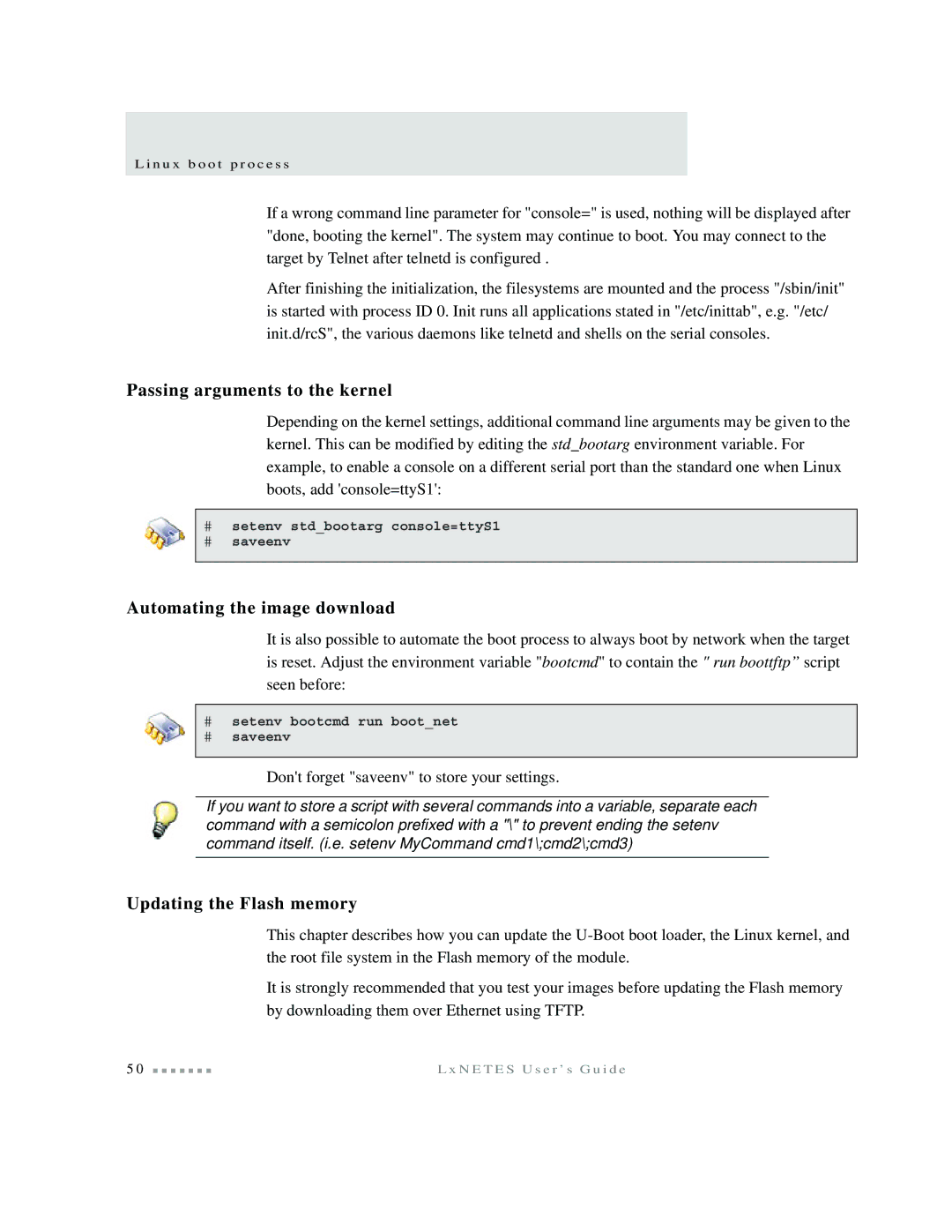
L i n u x b o o t p r o c e s s
If a wrong command line parameter for "console=" is used, nothing will be displayed after "done, booting the kernel". The system may continue to boot. You may connect to the target by Telnet after telnetd is configured .
After finishing the initialization, the filesystems are mounted and the process "/sbin/init" is started with process ID 0. Init runs all applications stated in "/etc/inittab", e.g. "/etc/ init.d/rcS", the various daemons like telnetd and shells on the serial consoles.
Passing arguments to the kernel
Depending on the kernel settings, additional command line arguments may be given to the kernel. This can be modified by editing the std_bootarg environment variable. For example, to enable a console on a different serial port than the standard one when Linux boots, add 'console=ttyS1':
#setenv std_bootarg console=ttyS1
#saveenv
Automating the image download
It is also possible to automate the boot process to always boot by network when the target is reset. Adjust the environment variable "bootcmd" to contain the " run boottftp” script seen before:
#setenv bootcmd run boot_net
#saveenv
Don't forget "saveenv" to store your settings.
If you want to store a script with several commands into a variable, separate each command with a semicolon prefixed with a "\" to prevent ending the setenv command itself. (i.e. setenv MyCommand cmd1\;cmd2\;cmd3)
Updating the Flash memory
This chapter describes how you can update the
It is strongly recommended that you test your images before updating the Flash memory by downloading them over Ethernet using TFTP.
5 0 | L x N E T E S U s e r ’ s G u i d e |
